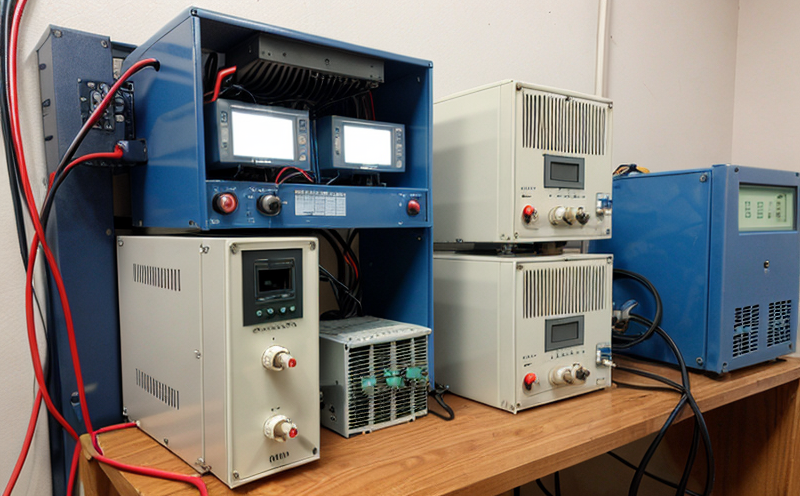IEC 60060 High Voltage Testing of Insulation Systems
The International Electrotechnical Commission (IEC) Standard IEC 60060 is a critical reference for testing the insulation systems used in high voltage railway and transportation equipment. This standard ensures that electrical components meet stringent safety requirements, thereby safeguarding personnel and infrastructure.
High-voltage insulation plays a pivotal role in ensuring the reliability and longevity of electrically powered railway vehicles and transport systems. The integrity of these insulation systems is crucial for preventing short circuits, arcing, and other failures that can lead to accidents or equipment malfunctions. IEC 60060 provides detailed guidelines on how to perform high-voltage tests to assess insulation performance.
The testing process involves subjecting the insulation materials to specific voltage levels over a defined time duration. This helps identify weaknesses in the insulation that might not be apparent under normal operating conditions. The standard also includes criteria for evaluating the breakdown strength, flashover resistance, and dielectric properties of the insulation systems.
The scope of IEC 60060 testing extends beyond mere compliance with regulatory requirements. It ensures that railway and transportation equipment can withstand the rigorous operational environments they face on a daily basis. This includes exposure to extreme temperatures, humidity levels, and mechanical stresses. The standard is particularly relevant for applications involving overhead lines, traction motors, and other high-voltage components.
For quality managers and compliance officers, adhering to IEC 60060 ensures that the equipment they source or manufacture meets global safety standards. This is especially important in an industry where interoperability across different systems and regions is crucial. For R&D engineers, this standard provides a framework for optimizing insulation designs while ensuring they meet stringent performance criteria.
The testing procedure outlined in IEC 60060 involves several key steps:
- Identification of the insulation system to be tested
- Preparation of the specimen according to specified dimensions and tolerances
- Application of high voltage for a defined duration
- Evaluation of the insulation performance based on predefined criteria
The instrumentation used in these tests includes high-voltage generators, current measuring devices, and recording equipment. The testing environment must be controlled to ensure accurate results.
IEC 60060 also addresses the issue of insulation aging. Over time, insulation materials can degrade due to environmental factors such as temperature fluctuations, moisture exposure, and mechanical stress. Regular high-voltage testing helps monitor this degradation and identify any early signs of failure that could lead to equipment malfunction or safety hazards.
The results of IEC 60060 tests are typically reported in a structured format that includes:
- Test parameters: Voltage, duration, temperature
- Specimen preparation details
- Data on breakdown strength and flashover resistance
- Evaluation of dielectric properties
The data from these tests is invaluable for quality managers and R&D engineers in making informed decisions about equipment design, material selection, and maintenance schedules. By adhering to IEC 60060 standards, organizations can ensure that their products meet the highest safety and performance criteria.
Applied Standards
| Standard Name | Description |
|---|---|
| IEC 60060-1: Insulated Live Working Tools and Equipment | Provides guidelines for the design, manufacture, testing, and use of insulated live working tools and equipment. |
| IEC 60060-2: Insulated Live Working Tools and Equipment - Particular Requirements | Offers specific requirements for different types of insulated live working tools and equipment. |
International Acceptance and Recognition
- The United States National Standards Body (ANSI) recognizes IEC 60060 as an accepted standard.
- European Union harmonizes its standards with those of the IEC, making IEC 60060 widely applicable across Europe.
- Australia and New Zealand have incorporated IEC 60060 into their national standards.
Environmental and Sustainability Contributions
Adhering to the stringent requirements of IEC 60060 helps ensure that railway and transportation equipment operates reliably in challenging environmental conditions. This reduces the likelihood of breakdowns, which in turn minimizes disruptions and operational costs.
- Reduces the frequency of maintenance interventions
- Prolongs the service life of equipment
- Makes railway systems more efficient by ensuring consistent performance





